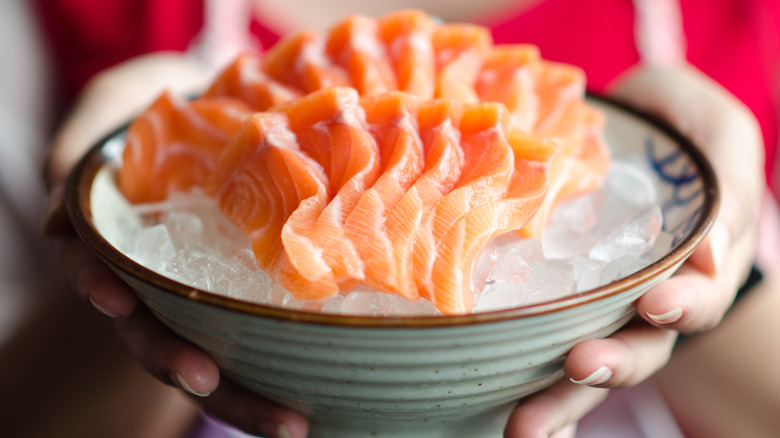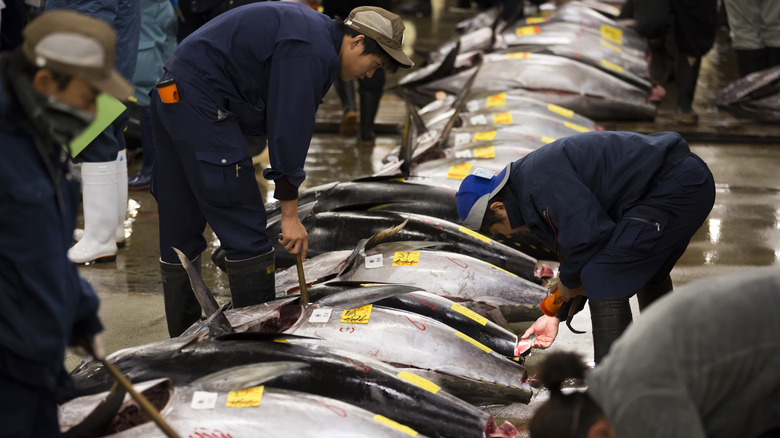The Extravagant Amount The Most Expensive Sashimi Cost
Sashimi is a deceptively simple, delicious meal. Although it seems like a very straightforward dish of thinly-sliced fish, as The Spruce Eats explains, sashimi is so more than that. It can be an elegant and complexly-flavored dish of thinly-sliced fish, seafood, or even red meats, and is usually served with a side of soy sauce, ginger, and wasabi. Sounds a little like sushi, no? Well, not quite. Sashimi is different from sushi in that it is never served over rice, thus allowing the focus to remain on the flavors and textures of the meat. Also, because sashimi is raw or lightly seared, the meat is served without any major accompaniments, it's important that high-quality, fresh ingredients are used for the best taste.
When it comes to fish-based sashimi, Bluefin tuna is commonly known as the best fish available. Rarest shares that it's not unusual for Bluefin tuna from Japan's oceans to sell for up to $400 per pound. Bluefin tuna is known to be dark red in color, fatty in flavor, firm in texture, and perfect for a dish like sashimi.
How much would you pay for good quality sashimi? For most fans of Japanese cuisine who answer that question, the answer probably isn't hundreds of dollars. Ask sushi restauranteur Kiyoshi Kimura how much he would pay and the answer may stun you.
How much did Kimura spend on sashimi?
Kiyoshi Kimura, the owner of the chain Sushi Zanmai, is known to pay top dollar for high-quality ingredients for his restaurants. So, when the "Tuna King" visited a Tokyo fish auction in 2019, he was prepared to spend some serious money on sashimi that would please his customer base. As it turned out, Kimura found a 612-pound Bluefin tuna of his liking and paid a hefty $3.1 million dollars for it. NPR did the math, which translates to $5,000 per pound of fish.
It may seem like a shocking amount to pay, but these exorbitant prices are increasingly the norm for top-tier Japanese sushi chefs. While for some, the popularity of Bluefin tuna isn't a good thing, as overfishing of Bluefin tuna has led to the large fish's placement on the endangered species list, the reality of the fish's decline hasn't slowed interest in it as a culinary delicacy.
After the purchase, Kimura admitted (via NPR) that the "tuna looks so tasty and very fresh, but I think I did (pay) a little too much," but the price tag doesn't seem to be a big hit for his company, Kimura paid nearly $1.8 million dollars for another, smaller Bluefin tuna through this company, The Kiyomura Corp. at a 2013 fish auction. One can only hope Kimura's sashimi is as delicious as it is expensive.

